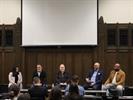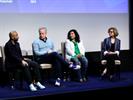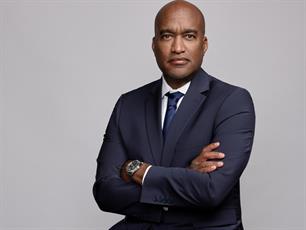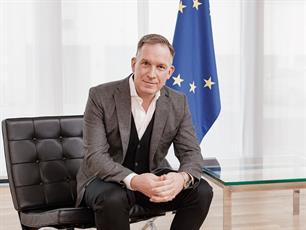Paul Holmes 13 May 2005 // 11:00PM GMT
On the morning of January 26 2004, Franco-German drugs group Aventis, the world’s fifth-largest pharmaceutical company, unexpectedly found itself on the receiving end of a $60 billion hostile takeover offer from its much smaller French rival Sanofi-Synthelabo. The aggressive nature of the offer looked like an asset-stripping exercise, which would have left Aventis’ highly experienced management out in the cold. In short, Sanofi’s bid failed to recognize the full value of the bigger company, or the promise in its pipeline.
In a Gallic twist to a conventional hostile bid, the French government appeared to be strongly behind Sanofi’s move, leaving Aventis with a fight on its hands to avoid being swallowed up by its smaller rival on Sanofi’s terms. FD’s international offices moved quickly to help Aventis put its defenses in place, organizing a coordinated campaign that included France, Germany, Switzerland, the U.K. and the U.S.
From day one FD worked side-by-side with Aventis’ management and bankers to identify and illuminate key elements that would assist the strategy, as set out above. Key themes were evolved and carefully targeted at different audiences.
Our program was focused on reaching the following audiences in order of priority: Analysts and investors, primarily in France, Germany, the UK and the U.S., reflecting Aventis’ international investor base; Political leaders in France and Germany; Employees in France, Germany and the U.S., Public opinion in France and Germany; Public and investor opinion in Switzerland after Novartis emerged as a possible White Knight.
Aventis had to act fast to regain the initiative, put its case to shareholders and avoid being steam-rollered into an unacceptable merger. Above all, the Company needed to counter a perception that backing for Sanofi by the French government meant the merger was a done deal at a price of Sanofi’s choosing. Aventis charged Financial Dynamics to develop and implement a communications program, the key aims of which were as follows; undermine the credibility of the Sanofi-Synthelabo offer, demonstrate the value within Aventis that the bid failed to recognize illustrate Aventis’ attractiveness as a merger partner for potential “White Knights”, increase the value of the Sanofi offer to a level acceptable to the Aventis Board, create a “merger of equals” which recognized the value in Aventis’ pipeline and the broader experience of Aventis’ in building a truly global pharmaceutical company driven by blockbuster products and neutralize the political impact of French government support for Sanofi.
As part of Aventis’ routine crisis planning, FD had already started working with the Company in 2003 to put in place a defense program in the event of any hostile approach. This was immediately put into action on the weekend of January 24 as rumors swirled of a possible Sanofi move, and enabled Aventis to come out fighting from day one – much to Sanofi’s surprise and discomfort. FD’s international network was an ideal match for the international complexities of the battle, involving our offices in London, Paris, Frankfurt and New York. The program brought together the expertise of FD’s specialist M&A Transactions team and its specialist Life Sciences team.
Key elements of the strategy over the three-month long bid battle included: maximizing awareness of new and late-stage products, a defensive move by a company afraid of losing patent protection on its biggest selling drug and seeking to pass this risk on to Aventis shareholders, notably the generic threat to Plavix, the weakness of its pipeline and the “overhang” risk from the expected exit of its biggest shareholders, Total and L’Oreal, Sanofi’s track record as a parochial French company with limited international presence and reliance on others to build its drugs into blockbusters contrasted sharply with Aventis’ success in creating a truly global business and generating four blockbuster drugs in the first four years of its existence, Sanofi’s promised cost cutting could only come from shedding jobs in France, Germany and, potentially, the U.S. and hostility to a foreign partner for Aventis had the potential to anger the markets and other countries, including Germany and Switzerland.
Dealing with different audiences in four major territories required considerable skills in tailoring and delivering messages. Media audiences were divided as follows; focusing on valuation, credibility and the actions of the French government, highlighting job security and the disappearance of Germany’s last remaining global pharma company and with the U.S. accounting for around a quarter of Aventis’ shareholdings and Aventis’ most important market, tactics combined valuation issues with the execution risk from Sanofi taking control.
Key themes were identified or highlighted at various points of the campaign and tailored to the audiences above:
Aventis’ 2003 results announced in London on Feb 5 attracted huge attention and were used to deliver a robust rebuttal of Sanofi’s offer and begin the work of setting out Aventis’ case. Key pipeline news was brought forward to highlight hidden value. Media began to question the validity of the offer, including a major Business Week article.
Daily contact with opinion leaders such as Lex and Breaking Views (distributed by the Wall Street Journal Europe and leading European financial press and news wires) ensured the Aventis case was highlighted and Sanofi’s claims rebutted on a day-to-day basis, Pipeline progress – successes in the Aventis pipeline were highlighted and selected reporters briefed to maximize impact – examples include separate Wall Street Journal articles on the promise of new antibiotic Ketec and the promise of a face-sculpting product Sculptra.
Raising media and analyst awareness of the Plavix issue helped underline a growing sense of Sanofi’s vulnerability.
Considerable media attention was focused on the likely entry of another partner for Aventis, further destabilizing Sanofi’s original bid. Novartis quickly emerged as a potential suitor and finally declared its hand in April.
FD helped focus attention on this, leading to international criticism reflected in The Economist, FT and Les Echos as well as the German media, embarrassing French ministers and making it more difficult to act blatantly against the interests of Aventis’ shareholders, a brochure setting out the case against Sanofi and stressing the case for a higher valuation was written by FD’s Transactions team and distributed to media and investors, the initiatives above were accompanied by a targeted advertising campaign, principally in France and Germany, key Aventis spokespeople were used to target different media. These included Chairman Igor Landau with international financial media, Finance Director Patrick Langlois with French media and U.S.-based COO Richard Markham with U.S. media.
Sanofi’s January 26 offer was unanimously rejected by Aventis’ directors. After considerable speculation, the neutralizing effect on the public intervention of French government ministers finally led Novartis to declare its hand as a potential friendly suitor on April 24. Stung by this threat, Sanofi responded on April 26 with an offer valuing Aventis at $65.5 billion, an increase of 14percent on its original offer in euro terms and doubling the cash element of the bid.
It also offered Aventis equal representation on key boards, a clear indication of the success of the communications program that FD put in place for the Company. Aventis’ directors voted to accept the improved offer. As the FT commented on April 27:“Given that Novartis did not table a formal offer, Sanofi faced suggestions…that it had bid against itself.”


































.jpg)

















